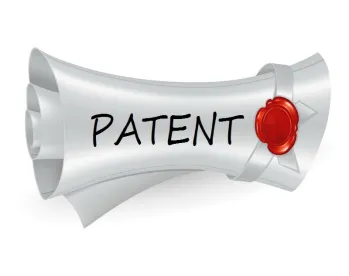Introduction
For companies that sell in China, manufacture in China, or face competitors manufacturing in China, Chinese patents are an increasingly crucial element of a strong patent portfolio. While many manufacturers have announced plans to diversify their supply chains away from China in view of persistent disruptions during the COVID-19 pandemic, those efforts have been slow to materialize. In the meantime, China continues to experience explosive growth in both patent filings and enforcement proceedings, far outpacing the U.S. This increase is driven by both the continued reliance on Chinese operations in global supply chains and by concerted efforts of Chinese lawmakers to strengthen patent rights and increase consistency in enforcement proceedings. This article summarizes those recent efforts at both the China National Intellectual Property Administration and in the Chinese court system.
Patent Filing Trends in China
China offers three distinct types of patent protection: invention patents, utility models, and industrial designs.
The invention patent is analogous to a U.S. utility patent. It is subject to a rigorous examination process for both novelty and inventive step, which can take 2–5 years to complete, and has a 20-year term.
The utility model has no equivalent in the U.S. and is often overlooked by U.S. manufacturers when setting filing strategies. It is subject to a shortened examination process for novelty only, typically grants in 6–12 months, and has a 10-year term. It requires lower filing fees and annuities, and is harder to invalidate due to its lower inventiveness requirement.
One risk that a manufacturer often cannot control is competition. Competition comes in various forms, ranging from fair competitors, who produce products that perform similar functions, to unscrupulous competitors, who “knock off” or copy a product. Another type of competitor is the one that intentionally creates a product that is very similar but strategically avoids intellectual property of the product being produced (commonly referred to as a “design-around”). Yet another type of competitor is that of a former employee who learns (or steals) from you and competes using what was learned or inappropriately taken.
While competitor risk is unpredictable, one way to minimize competition is to strategically create, procure, and enforce intellectual property. With the significant costs of R&D, manufacturing, and market risks, the ability to protect the investment of creating and marketing products is important. With the added risk of unscrupulous “knock-off” competitors (often from non-U.S. countries) and competitors that design-around intellectual property meant to protect the investment, the value of a strategic intellectual property program is that much more of an imperative.
The industrial design is similar to a U.S. design patent, covering only the outward appearance of an article of manufacture, and has a 15-year term (extended from 10 years in June of 2021).
Like U.S. utility applications, Chinese invention applications are typically published 18 months after filing. Examination of the numbers of Chinese invention patents published reveals a sharp increase in 2021 compared to both 2020 and 2019. This increase was not replicated in the U.S., which instead remained stagnant.

Figure 1: Number of Invention/Utility Patent Applications Published per Year (Source: TotalPatent One®)
While U.S. publications decreased in 2021, Chinese publications rose more than 13%. Of course, due to the 18-month publication delay, these numbers reflect 2019 application filings, and it is likely that 2022 publication numbers will decrease due to the start of the COVID-19 pandemic in 2020.
Utility models, however, saw no such slowdown. The number of utility models granted ballooned from about 2.4 million in 2020 to over 3.1 million in 2021. The 2021 numbers reflect 2020 filings, meaning that the number of utility model filings increased in spite of the pandemic. Whether this represents an overall increase in patent filings or instead a shift from invention applications to utility model applications (e.g., as a cost-savings measure due to reduced 2020 IP budgets) is yet to be seen. Either way, utility models merit serious consideration for manufacturers, particularly those whose products have lower lifespans.
The increased activity in China also extends to design patents. In 2021, the number of design patents granted in China was nearly 24 times the number granted in the U.S.

Figure 2: Number of Design Patents Granted per Year (Source: TotalPatent One®)
China’s recent changes to design patent laws, such as increasing the design patent term from 10 years to 15 years, likely signals that China’s dominance in design patent filings will continue in 2022 and beyond. Importantly, manufacturers should not fall for the misconception that design patents are limited to consumer products; on the contrary, design patents are available on any products, regardless of where they fall within the overall manufacturing process, and regardless of whether they are visible to the end consumer. They are particularly useful to prevent knockoffs, which remain a pervasive problem in China. And aside from being enforceable in Chinese courts, design patents can be used to facilitate takedowns on Alibaba and Amazon, substantially adding to their value.
Trends in Patent Enforcement in China
The rapid increase in Chinese patent filings has been accompanied by a similar increase in patent enforcement. China’s efforts to strengthen patent rights may have encouraged manufacturers to engage in more enforcement in China while also fueling the filing of additional patent applications to create future enforcement opportunities. Another factor likely driving increased enforcement and filings is the recent change to Chinese patent laws, which provides for up to quintuple damages for intentional infringement, increased statutory damages from 1 million yuan to 5 million yuan (approximately $780,000 USD), and an increase in the statute of limitations from two years to three years.1 Whatever the reason, the opportunity for enforcement in China looks entirely different than it did a decade ago.
In 2019, China created the IP Tribunal, focused on centralizing appeals of decisions regarding most IP disputes and serving a function somewhat analogous to the U.S. Court of Appeals for the Federal Circuit. The Tribunal is a focal point of China’s policy changes, intended to improve the quality of IP protection and standardize enforcement by providing specialized judges for hearing disputes. Indeed, all of the judges have at least a master’s degree in a science field, and over 30% hold PhDs.
After completing its three-year pilot program, China has continued to invest in the Tribunal and heralds its development as deepening reform in IP protection. Of the nearly 2,600 newly-received non-administrative cases in 2021, 22% were for disputes involving invention patents and 31% were for disputes involving utility model patents.2
Similar to the interplay between patent law and antitrust law in the U.S., Chinese patent disputes often involve “monopoly” laws. Monopoly cases continue to see heightened importance in China. In 2021, the Tribunal decided a case where it ruled that a settlement agreement to a patent infringement lawsuit was not narrowly tailored to the infringement dispute and instead extended to activities that were intended to restrict and exclude market competition.3 In reaching this conclusion, the Tribunal held that the agreement contained restrictions that had nothing to do with the scope of protection of the patent in question. The takeaway from this case is that patent agreements in China are likely to come under increased scrutiny from an anti-monopoly perspective and should be intentionally focused on the scope of protection provided by the patents at issue. Manufacturers with IP agreements in China would be wise to review them in light of this decision.
Aside from administrative and judicial arenas, Chinese patents can also be enforced in a specialized system created by Alibaba, the Chinese e-commerce giant.
This system requires a patent owner to register its rights on Alibaba and then file a complaint identifying infringement occurring on Alibaba. In 2021, more than 640,000 trademarks, copyrights, and patents were registered on Alibaba.4 While Alibaba did not release how many of these were patents, the significant usage of Alibaba across all IP warrants consideration by patent owners.
What to Watch for in 2022 and Beyond
As in most legal arenas, the landscape in China’s patent system is constantly shifting, and the next few years look to be action packed. First, the coming months will see the continued development of an ongoing dispute at the World Trade Organization (WTO), between China and the European Union (EU), regarding the ability of Chinese courts to influence proceedings in other countries by assessing fines on the parties.5 The EU has taken issue with China’s policy of “prohibit[ing] patent holders from asserting their rights in other jurisdictions by commencing, continuing or enforcing the results of legal proceedings before a non-Chinese court.” According to a Request for Consultations issued to China by the European Union, “[t]he prohibition materialises through Chinese courts issuing so called ‘anti-suit injunctions’ enforced through daily penalties in case of infringement . . . .” Critics argue that China implemented this policy in order to shackle litigants to Chinese courts, which can provide unfair advantages to Chinese entities. Proponents argue that the policy ensures the integrity of the Chinese courts to resolve disputes without fear of forum shopping. A response from China is due at the WTO in the coming weeks. Unless this policy changes, Chinese patent holders are likely to consider the benefit of enforcement in China at the risk of being precluded from enforcement outside of China.
China also recently joined WIPO’s Hague system for the International Registration of Industrial Designs, making it possible for an applicant to obtain design rights in China and other Hague countries using a single application. With the prolific nature of design patent application filings in China, the Hague system could soon see a radical uptick in usage.
2022 also marks the effective start of the Regional Comprehensive Economic Partnership (RCEP) — a Free Trade Agreement between China, India, Australia, New Zealand, Vietnam, Cambodia, Myanmar, Japan, South Korea, Thailand, Malaysia, the Philippines, Indonesia, Brunei, Laos, and Singapore — forming the largest trading bloc by total global domestic product.6 While deferring to the Trade-Related Aspects of Intellectual Property Rights (TRIPS) Agreement, the RCEP includes extensive IP provisions, one of which being that “each Party shall provide that any person may do an act that would otherwise infringe a patent if the act is done for experimental purposes relating to the subject matter of a patented invention.”7 The development of this and other provisions of the RCEP in the years to come is likely to have a significant impact on global IP strategy.
China’s National Intellectual Property Administration (CNIPA) has proposed revised examination guidelines for implementing the amended patent laws,8 and a decision on the revisions may come in 2022. The proposals include:
-
Eliminating the 15-day mail delay “grace period” for deadlines to respond to communications from CNIPA;
-
Permitting delayed examination of a design patent application for up to 36 months;
-
Permitting examiners to require submission of a video file showing animation of a graphical user interface claimed in a design patent application;
-
Implementing inventiveness examination (in addition to the current novelty examination) in utility model applications;
-
Precluding utility models from receiving patent term adjustment (PTA), which became available to utility models under the amendment to the patent law entered in 2021 (albeit in limited circumstances);
-
Precluding PTA for invention patents filed simultaneously with utility model applications; and
-
Delaying examination of an invention application that is filed simultaneously with a utility model application.
These revisions to the examination guidelines, combined with the other upcoming changes discussed above, indicate that 2022 will be a year of change in Chinese practice. Manufacturers would be wise to stay abreast of these issues and others so as to maximize the value of their global patent portfolio.
ENDNOTES
1 Decision of the Standing Committee of the National People’s Congress on Amending the Patent Law of the People’s Republic of China, Xinhua News Agency, October 18, 2020, http://www.gov.cn/xinwen/2020-10/18/content_5552102.htm (Last Accessed May 20, 2022).
2 Annual Report of the Intellectual Property Tribunal of the Supreme People’s Court (2021), Intellectual Property Court of the Supreme People’s Court, February 28, 2022, https://ipc.court.gov.cn/zh-cn/news/view-1783.html (Last Accessed May 20, 2022).
3 (2021) Supreme Court Zhimin Zhong No. 1298; Supreme People’s Court of the People’s Republic of China; Civil Judgment, Intellectual Property Court of the Supreme People’s Court, March 21, 2022, https://ipc.court.gov.cn/zh-cn/news/view-1873.html (Last Accessed May 20, 2022).
4 2021 Annual Report on Intellectual Property Protection, Alibaba Group, https://files.alicdn.com/tpsservice/8f603e2d95fbb318d22a7315c9833e80.pdf (Last Accessed May 20, 2022).
5 Request for Consultations by the European Union, February 18, 2022, https://trade.ec.europa.eu/doclib/docs/2022/february/tradoc_160051.pdf (Last Accessed May 20, 2022).
6 RCEP: Asia-Pacific Countries Form World’s Largest Trading Bloc, BBC, November 16, 2020, https://www.bbc.com/news/world-asia-54949260 (Last Accessed May 20, 2022).
7 Regional Comprehensive Economic Partnership (RCEP) Agreement, Article 11.40 (November 15, 2020).
8 Notice on Public Solicitation of Comments on the Draft Revised Guidelines for Patent Examination (Draft for Comments), China National Intellectual Property Administration, August 3, 2021, https://www.cnipa.gov.cn/art/2021/8/3/art_75_166474.html (Last Accessed May 20, 2022).





 />i
/>i

